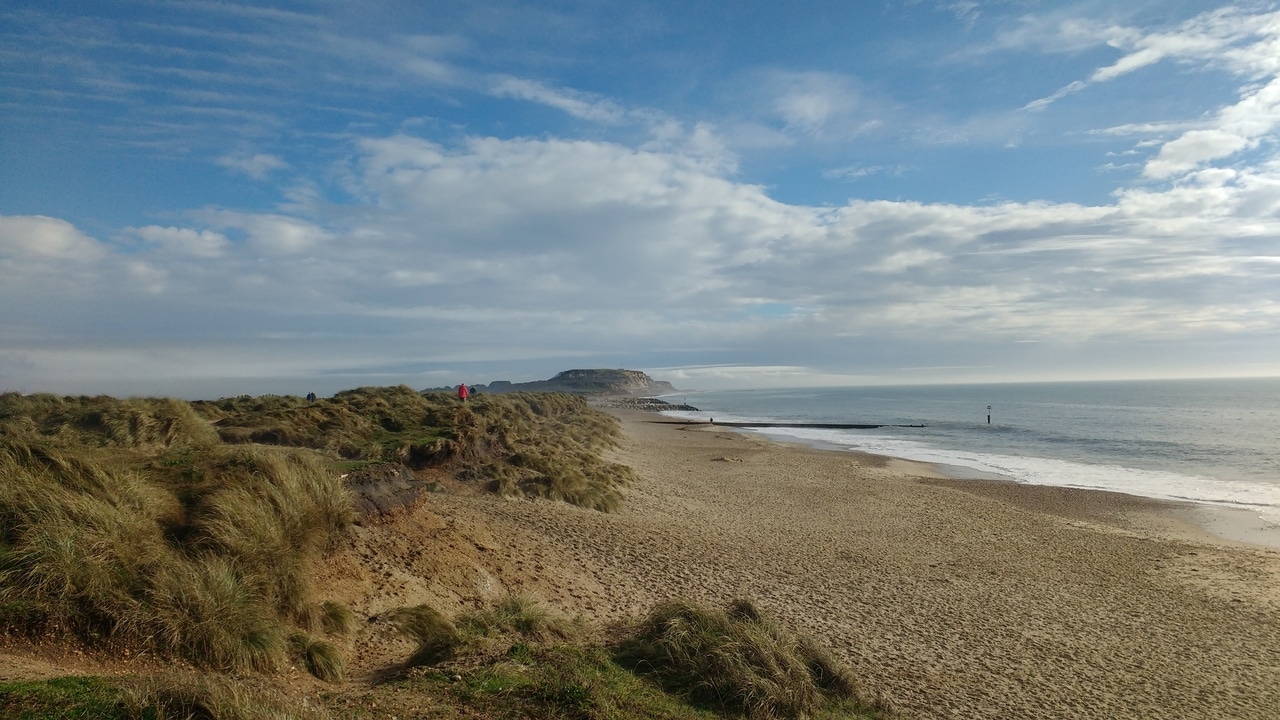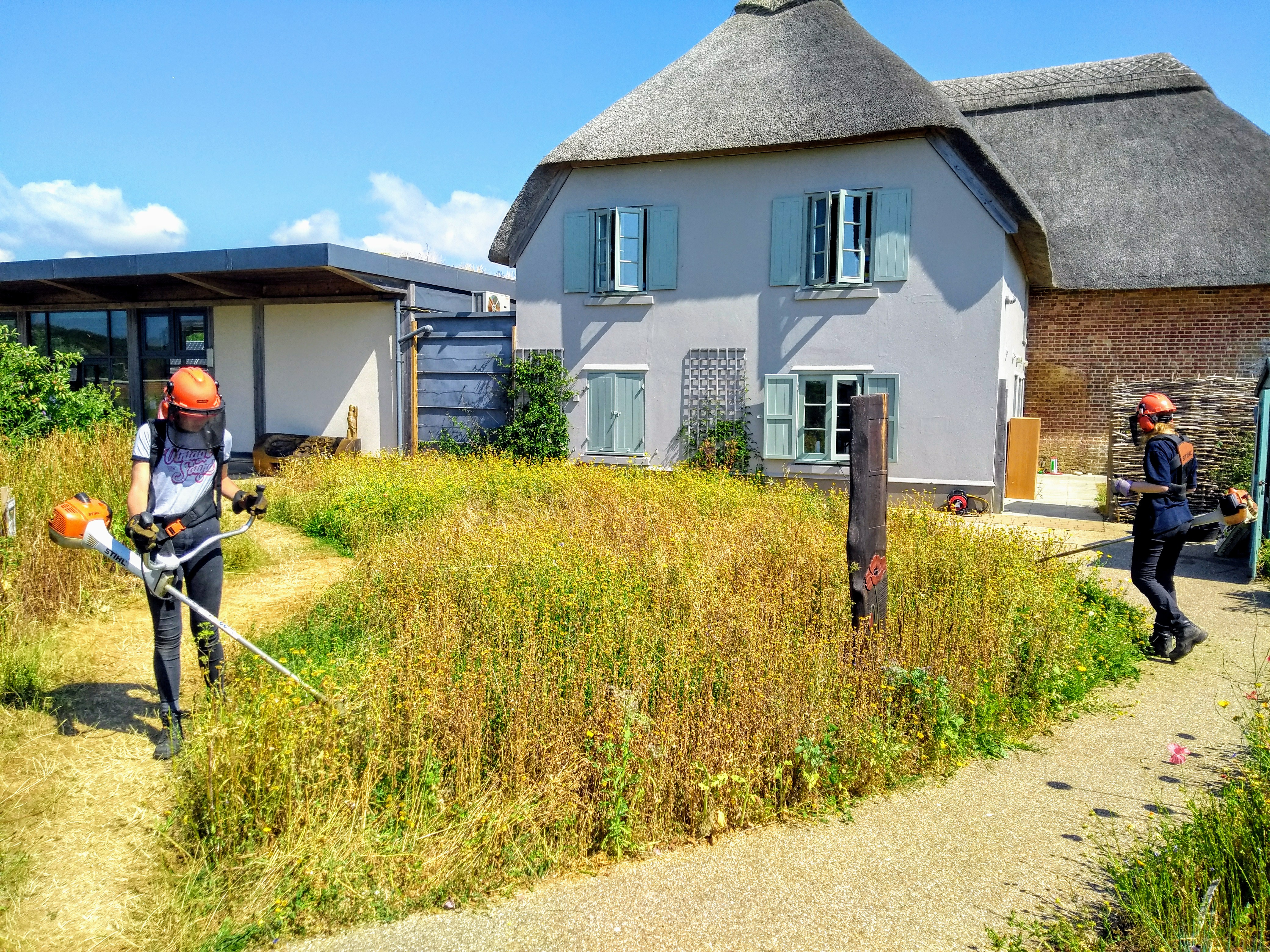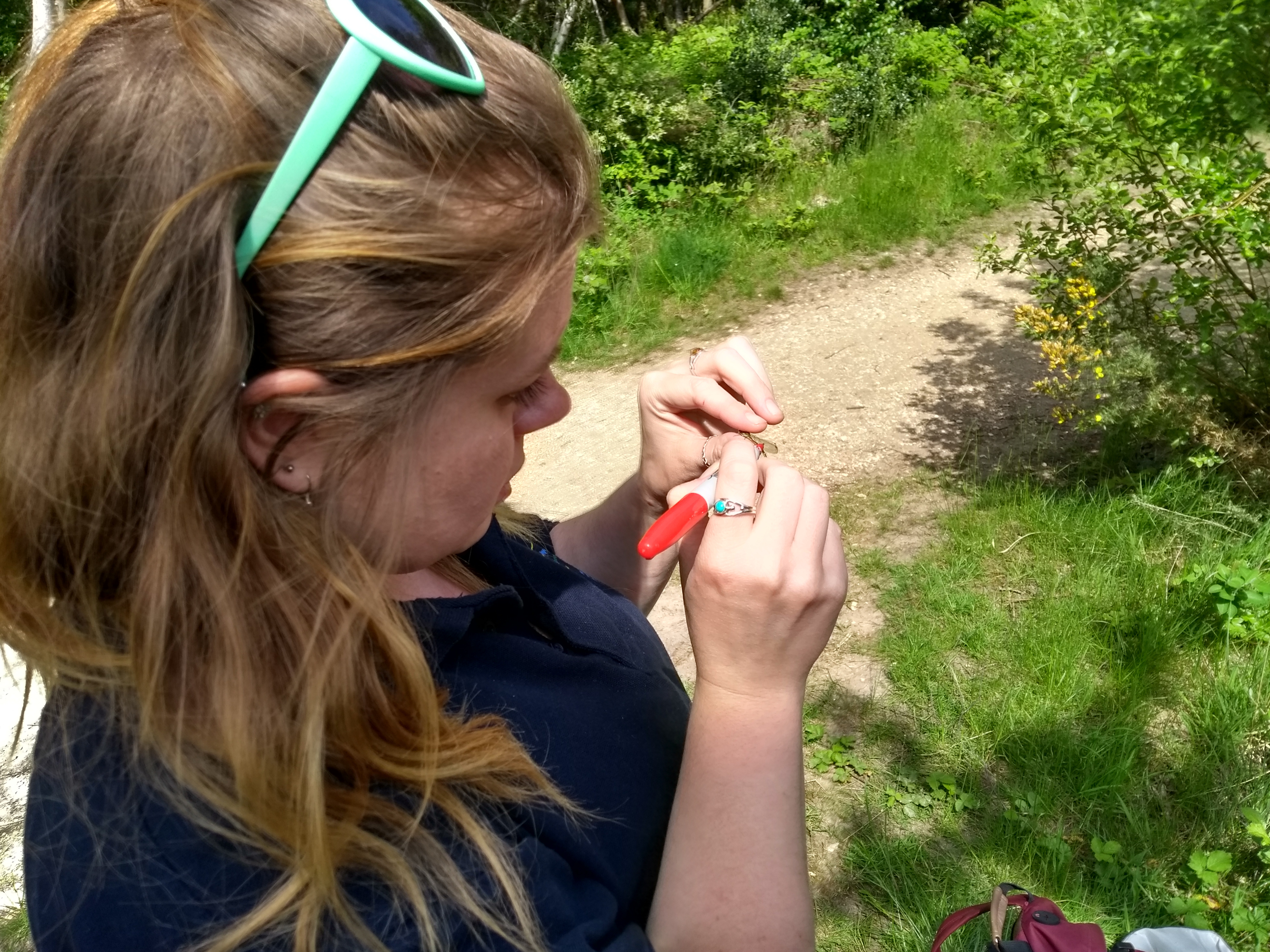Developing the future workforce; case study of a successful placement scheme.

During 2013, we took on our first placement students, three in total, it has since evolved into a highly rated and competitive offer with benefits to the students, the nature reserve, the organisation and the industry. In 2020, the scheme was rated above Intel, Microsoft and Deutsche Bank for its contribution to the careers of placements.
Over the past 6 years, our placement scheme has hosted students from at least eleven different colleges and universities, including two European institutions and from at least 9 different subjects, from Foundation Degree in Wildlife Conservation, to MSc in Marketing and Communication. Hengistbury Head now hosts over 25 student placements per year.
These students are mostly on 2 to 5 week mandatory placements, however we also take a handful of students on sandwich year placements (approx 9 months).
The setting.
The scheme is based at Hengistbury Head Nature Reserve in Dorset. A 164 hectare, diverse SSSI, with around one million visitors per year. We have a herd of rare breed Shetland cattle, a flock of native Cotswold sheep, a Visitor Centre with associated social media accounts. A butterfly transect (established 1979) a daily moth trap (approx 840 species) and a population of rare Natterjack Toads - monitored throughout the spring and summer.
This provides the ideal location for placements to learn habitat management, species ID and monitoring, data analysis, report writing, education/engagement, visitor services, marketing/digital marketing and animal husbandry.
However, I believe that a placement offer is scalable to any setting. The key to getting this right is identifying the characteristics of the setting, and the strengths of your current workforce - and then matching through selecting candidates with care.
Placement opportunity structure.
We have come to define the important steps to our placement as:
- Interview - finding the right cultural fit
- Induction/Training - orientation, basic and ongoing, worthwhile and evidenced training (Learning Zone)
- Performance Zone - allowing students to test and demonstrate abilities
- Review - unlocking further chances to develop
- Cascading - adding value for soft skills in leadership and communication
Our structure is designed to support students progress and allows for different rates of development.
Week 1 introduces students to the workplace, the staff, and as many of the work themes as possible, including moth trapping, butterfly transects, machinery use and livestock checking. Week 2 provides opportunities for placements to undertake supervised tasks learned during week 1, e.g. brushcutting a pathway, moth trapping etc, with staff ensuring safety and accuracy.

Week 3 allows for unsupervised performance of some work duties, not including machinery, e.g. at this point students are largely leading livestock checks and some wildlife monitoring. A review has now been introduced at the start of week 3, to find out what areas the individual students want to progress in and which they feel confident enough in.
Weeks 4 & 5 would see a new intake arrive and crossover with those about to finish, providing opportunities for original placements to demonstrate their learned abilities and knowledge by cascading and leading, e.g. moth identification, monitoring techniques or orienteering around the reserve. It also provides for evidencing of leadership and intuition.
The scheme developed as opportunities arose. For example, the first week of the main student intake (mid-June) now includes a session led by a retired and well respected conservationist who has great knowledge in botany. We select a priority habitat, he teaches the placements how to identify species in that habitat, they are then able to begin carrying out botanical surveys in these areas, supervised to begin with to ensure accuracy. Some placements have written summary reports into the habitat types found in these compartments, which have now impacted on the management plan for the reserve.
What the students say.
The Top 100 Undergraduate Employers list is curated by RateMyPlacement, an organisation which enables students to review and give recognition to those employers who value placements and aid in the development of the future workforce.
https://www.ratemyplacement.co.uk/top-employers
The reviews provide a valuable resource for employers to analyse what they are doing well, and where they could improve. We were able to analyse feedback from around 50% of our placements since 2017 (around 40 students) and pull out keywords which helps explain why our placement offer has been so well received.
This feedback shows us what is important to the students; being valued, encouraged, supported and having a well thought out offer leads them to feeling that they have achieved something during their time with us. It is also clear that having the right staff in place to support such a scheme is vital.
.png)
As a key principle for placements; if we are confident that a student placement can do specific work independently, such as the butterfly transect, and there is also litter picking to be done, then it will be the paid employee who will clear the litter, whilst the student expands the experience they are looking for. Of course they need to be exposed to the realities of the roles, but this should be reasonable and balanced.
Placements state that they appreciated working alongside “knowledgeable” staff, I would add from my perspective, that patience, empathy and clear communications are also vitally important as characteristics of staff that work alongside placements.
The benefits.
As an employer, the benefits for us are clear. Two of our three most recent appointments were formerly placements. They had to apply and interview alongside candidates, however knowing them from placement meant that we had some more assurance in the evidence they were providing to support their application - because we could also attest to it.
This doesn’t do much to get away from the perception that in conservation, employers often know who is going to get a role prior to advertising, but we have had as many roles go to candidates not previously known to us (where former placements had also applied). The best candidate on the day will always be offered the role.
We also believe the sector benefits from our scheme. Many of our placements are now working in a wide range of roles - from farm managers to consultant ecologists, and from livestock managers to geography teachers. One of our placements even finished in the top 5 Placement of the Year category, across all sectors. Enriching the workforce helps everyone.
The other beneficiary is the nature reserve. Whilst the placements are with us, the day-to-day management is carried out, but we are also awash with the views of many more pairs of eyes taking a fresh look at what we do, undergraduates and postgraduates that are learning the very latest theories and techniques during their studies. Our team is exposed to this and it adds to their informal continuing professional development.

And of course, the benefit to the student is clear, in a recent employers survey by the Yorkshire Wildlife Trust (https://www.ywt.org.uk/blog/our-tomorrows-natural-leaders-are-helping-bridge-gap)
self motivation, initiative and communication were often cited as being the most frequently lacking soft-skills in entry-level applicants - placement schemes like ours provide a huge opportunity to grow in these areas, and as placement hosts, we are in a position to provide references attesting to this.
The future.
The Covid pandemic, gave the team a chance to take a breath from the normal routine. It has become clear that staff have found the volume of placements we were accepting adds considerable pressure to find meaningful work for a greater number of people over a long period of time. Once normality resumes, we are going to be reducing the period of the year that we accept short placements term placements to help with this.
Covid has also presented other opportunities, we have now developed a “virtual conservation work placement”, for 40 students, taking place in December - open to applicants from anyone in the UK studying a course related to conservation. It is a week full of varied and experienced speakers, from both in and outside of the sector, looking at a range of topics from career development to conservation grazing.
It is my hope that one day, we as an industry, no longer ask for experience for entry-level job candidates. There is room for more environmental sector organisations to provide meaningful experience through placements and training on the job - virtually or in person, we have seen this with remote courses offered online during the Covid crisis. An increase in such a resource, may help to remove some of the barriers to people entering our sector, where gaining experience favours those with the resource to be able to volunteer.
And of course we can increase the skills that we employers want to see more of, it also gives us a seat at the leading edge of emerging talent. We could then be in the healthy position of competing for the best employees, rather than making them compete for our job vacancies.





Please sign in or register for FREE
If you are a registered user on WildHub, please sign in